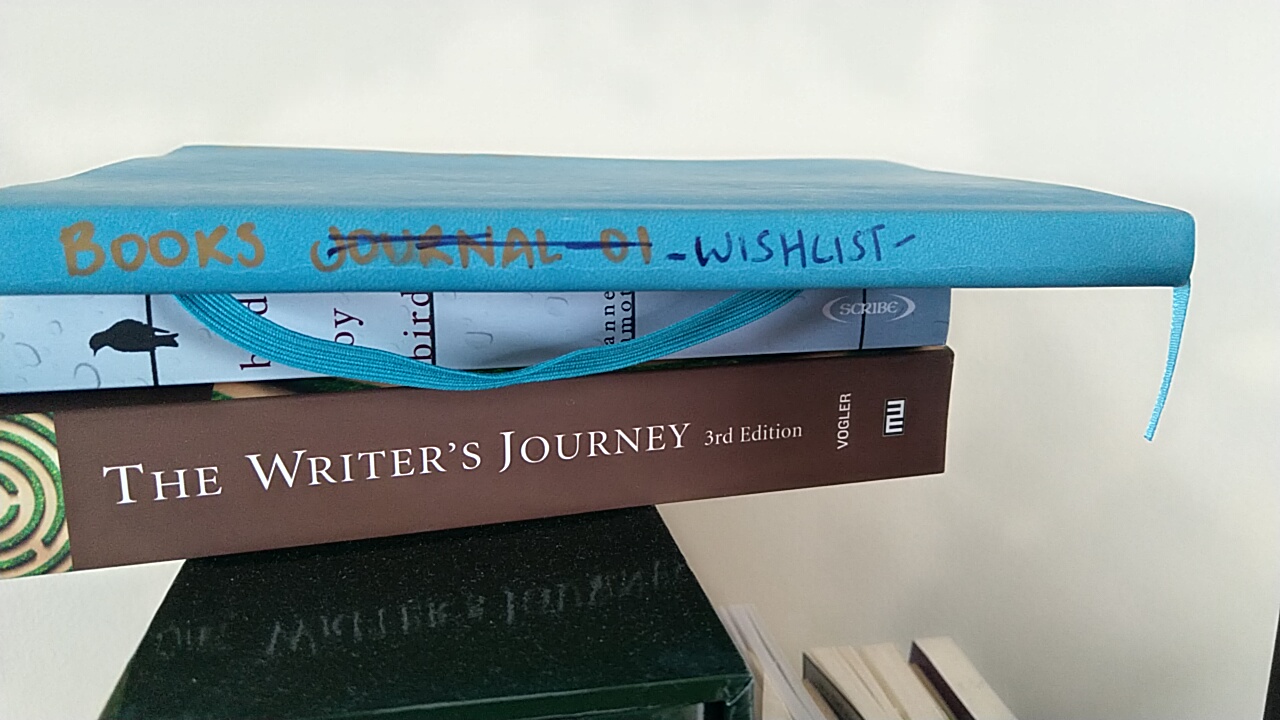It’s no secret that writers are often voracious readers. But what’s the best way in which to keep your epic to-read list? In this post, I show you how I keep mine.
When the internet became something you could be connected to 24/7, as opposed to a 30-minute jaunt on dial-up, e-commerce exploded. And with it, online bookshops.
Each one of them was filled with tantalizing and beautiful offerings.
Each one had a store.
And most of them had wishlists.
If you’re anything like me, what you ended up with was a books wishlist in a gajillion different places. The only time that you looked at them was when you happened to be on that website, perusing even more ways to spend your hard-earned cash. Very few of us go to a separate wishlist website in order to consolidate our scattered, materialist desires.
When I decided only to buy things second-hand for a year, I immediately faced the problem of how to keep my books list with me.
There are tens of beautiful second-hand bookshops within a 10 km radius of me. Each one has a different vibe, a different type of stock, and none of them are online. The lists that I had kept for years in dominant online retailers no longer applied. Yet every time I walked into one of these shops, my first question became:
‘What the hell is on my list?’
The solution?
A hardcopy journal.
The idea came to me when I reflected on my ex’s mother’s practice of keeping a ledger containing every book she’d ever read. Her records included the author, the title, and a few notes of what it was about and what she thought of it. She did this because she was a very active library user, and rarely bought books of her own to read. Why would you bother, when the library service is so good? To be honest, since actively borrowing from my local library, I’ve wondered why I ever dropped so much cash on books myself! Yet in an attempt to follow in her super-organised footsteps, I found myself writing pages and pages and pages about books, instead of simply keeping a ledger of titles. It was a practise that didn’t last very long. In my case, I had a crazy fear that two sentences just wouldn’t suffice for my long-term memory. (I was wrong about that, by the way.) Critiquing books is better for me than keeping a ledger.
But now I had this book with hundreds of blank pages in it.
What was I going to do with it?
Turn it into a wishlist.
When one of my mentees commented that she feels like there are way more books to read than there is time in which to read them, I raced to reassure her that this is normal. Everyone I know feels that way—especially writers! Even Clive James, that epically well-read critic I love so much, felt the same way. I suspect that it is a condition of age: The less life you have, the more of others’ ideas others you wish to consume before you leave the realm.
There are some major benefits to keeping a hardcopy wishlist of books.
First, if you’re a keen note-taker like I am, it gives you a central place in which to keep lists of books that you acquire during your daily travels. Each time I retire a journal, I transfer every title over to the central list so that new entrants don’t get lost.
Second, it allows you to capture the titles referenced by other authors. This becomes incredibly important if you borrow books rather than buy them!
Third, you have your own go-to list for your new stack of library books. Every time you find your library pile getting thin, you can cast your eye over your wishlist and order for yourself anything that jumps out.
Fourth, it allows you to review what Past You has found interesting enough to capture. My own list is a mishmash of fiction and nonfiction, capturing everything from physics to fantasy. Just because I wanted to read a complex book on physics “one day” doesn’t necessarily mean I want it in this moment. But something else will jump out and become meaningful.
Fifth, you can take it with you any time you go to a second-hand book shop. Perusing your list and the shelves simultaneously, you can find many a gem that you would otherwise have skipped over. Without your list with you, you’ll no doubt walk out with something; but with your list in hand you can save many more hours of your day.
Six, striking them out when you’ve read them is immensely satisfying. When I put my wishlist together, this is the one thing that I had discounted. Now, flipping back through the pages, I’m starting to see titles struck out, having been knocked over and consumed. It gives me a warm and fuzzy feeling, like the promise of maybe catching up.
Curious to see what my list looks like? Wonder no more:
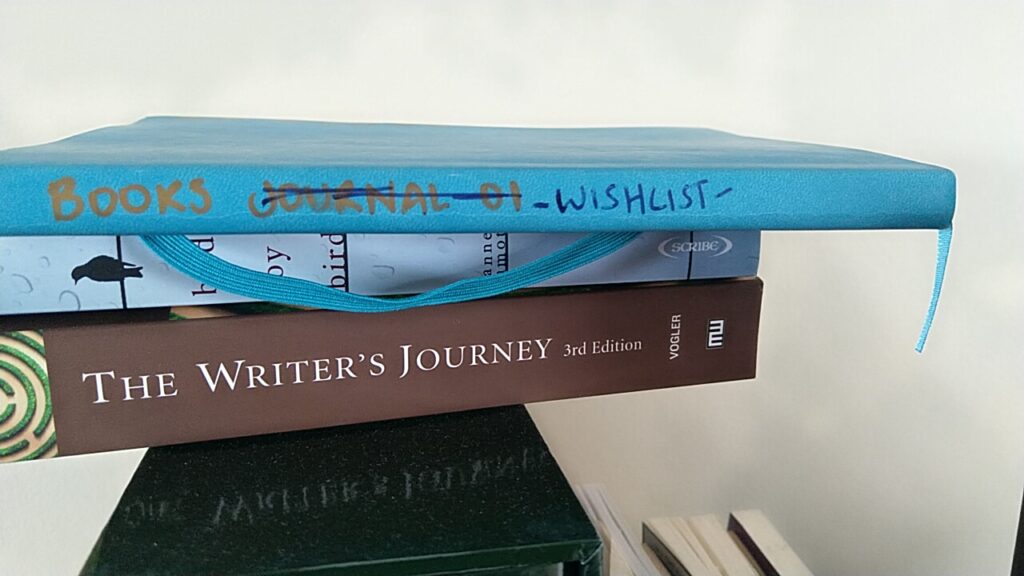
The (updated) spine. It lives on my writing desk. 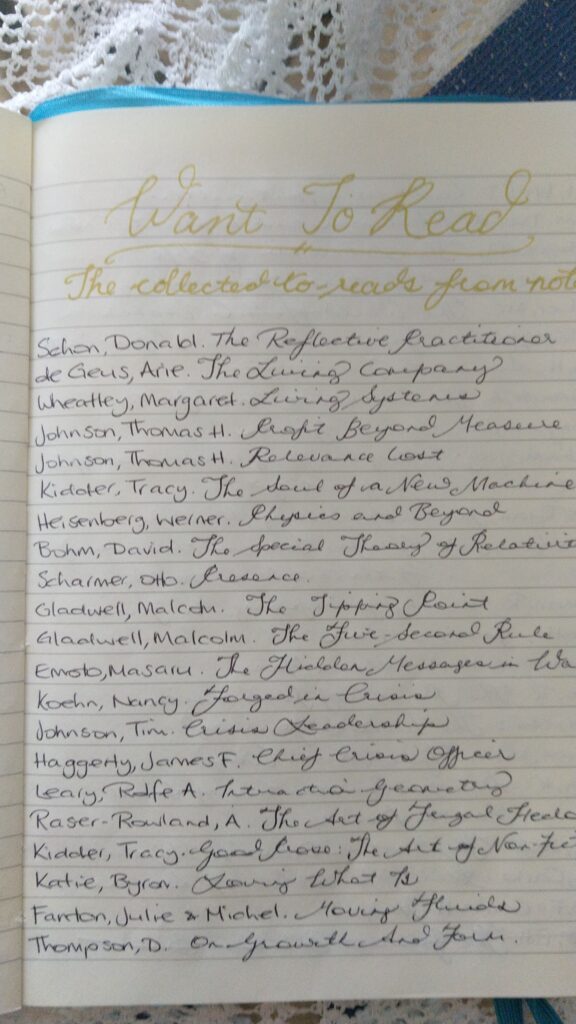
Wishlist Journal Page 1 
Wishlist Journal Page 2 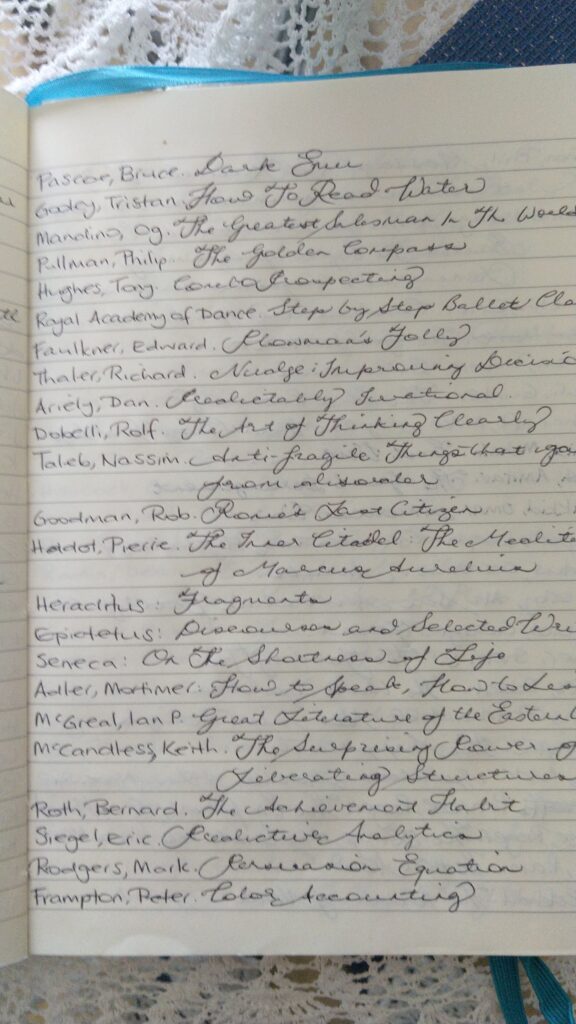
Wishlist Journal Page 3 
Wishlist Journal Page 4 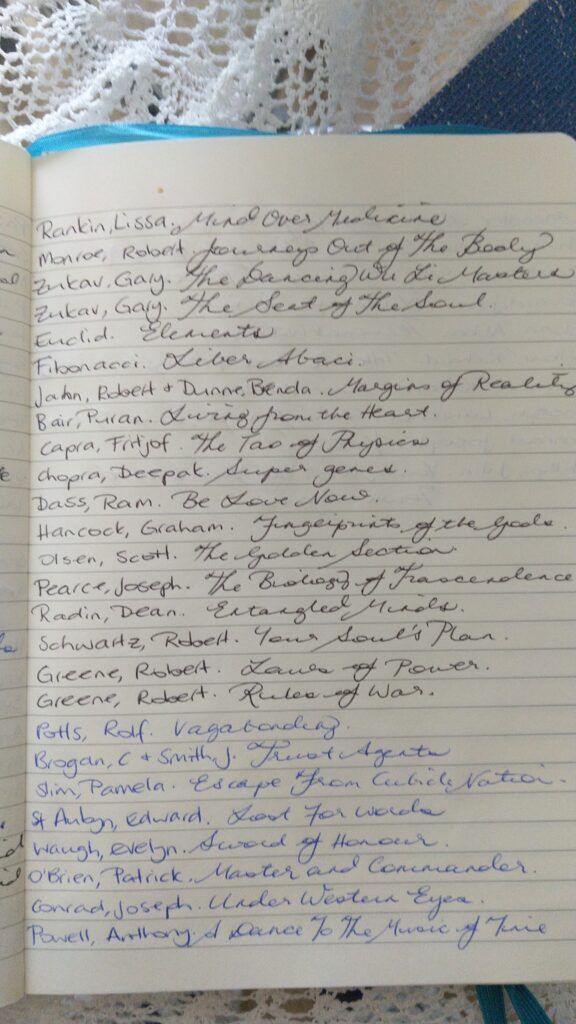
Wishlist Journal Page 5 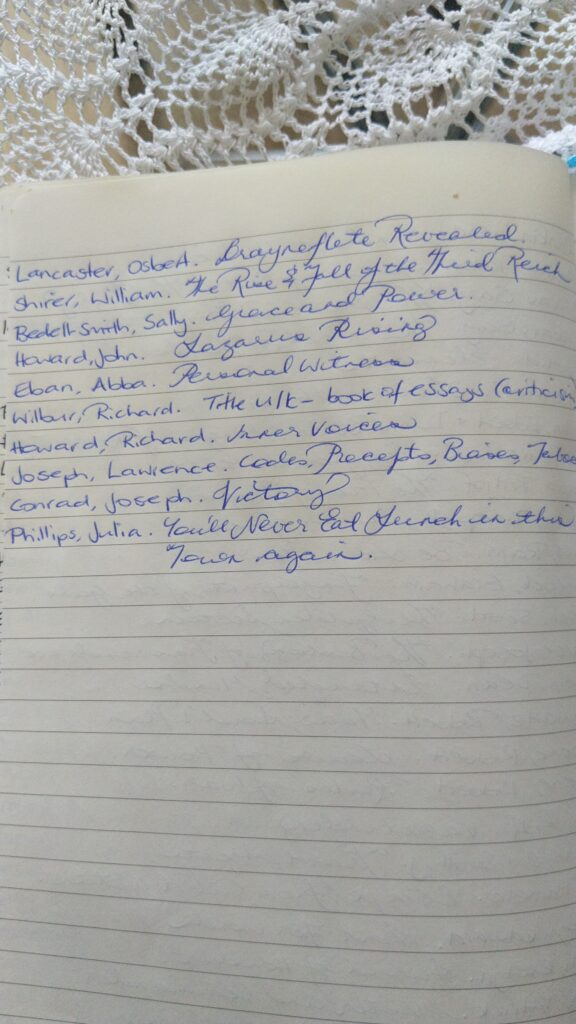
Wishlist Journal Page 6 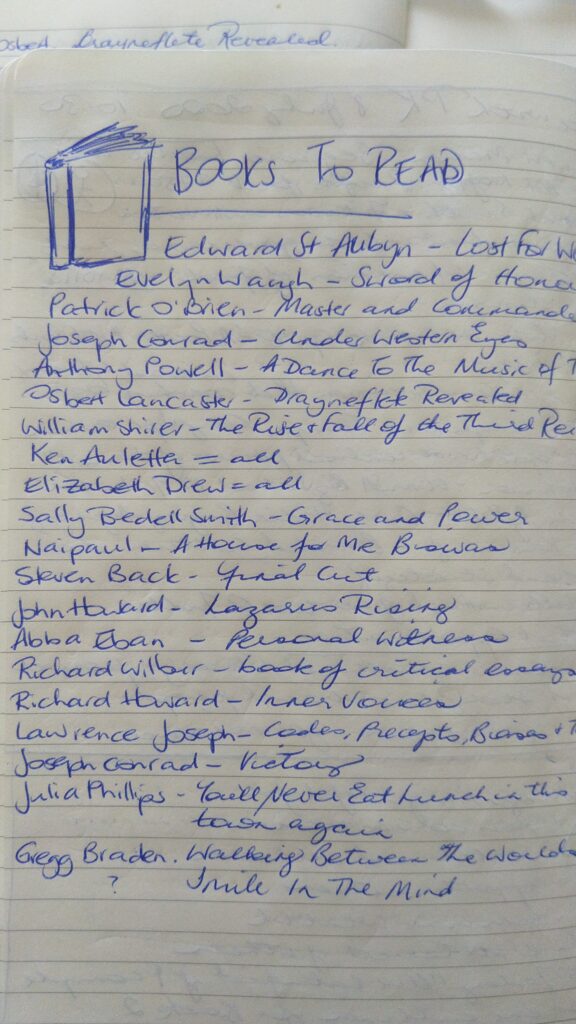
The growing list in my current notebook; these will be transferred across.
Hardcopy records have a bad rep, for no good reason.
Yes, you can lose them. You can drop them in water. You can burn them. They can be stolen. But, honestly, that’s really all of the problems you’ll ever have with a hardcopy record. If the paper is good quality, it will stand the test of time in ways that digital records just don’t.
A hardcopy wishlist will never be grandfathered. You’ll never be deplatformed, lose access if you lose all your money, find the software doesn’t run on new devices, glitch out, lose data, run out of batteries, experience screen death, or any of the other pervasive problems of digital life. It is platform agnostic, and deeply personal.
In my opinion it’s hands-down the best way to keep a reading list.
How do you keep yours?
Did you enjoy this? Get a letter from me via email every week:
Or choose my regular newsletter instead. 🙂 If you want letters in your real-life letterbox sign up here instead.

